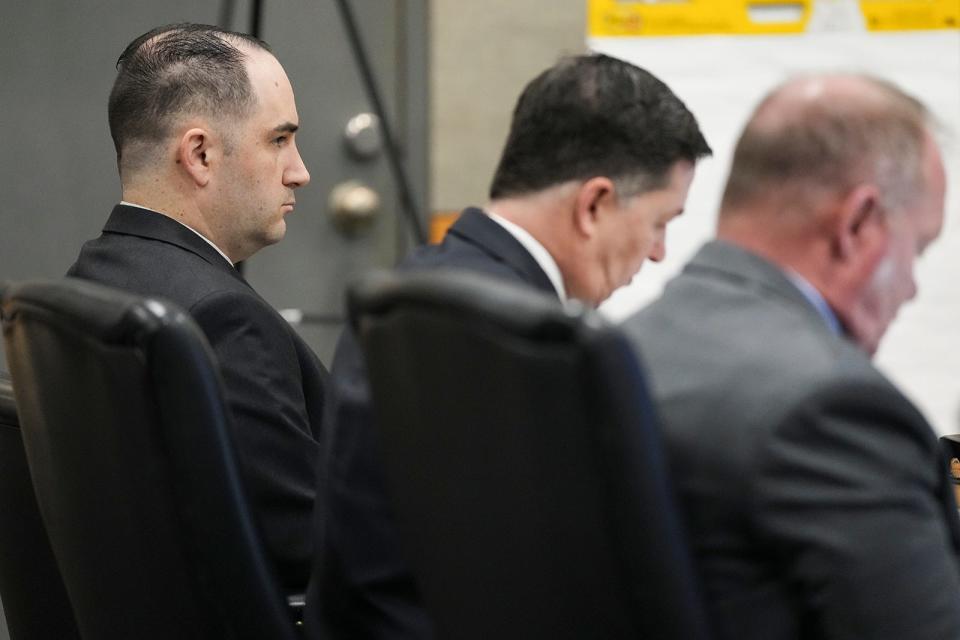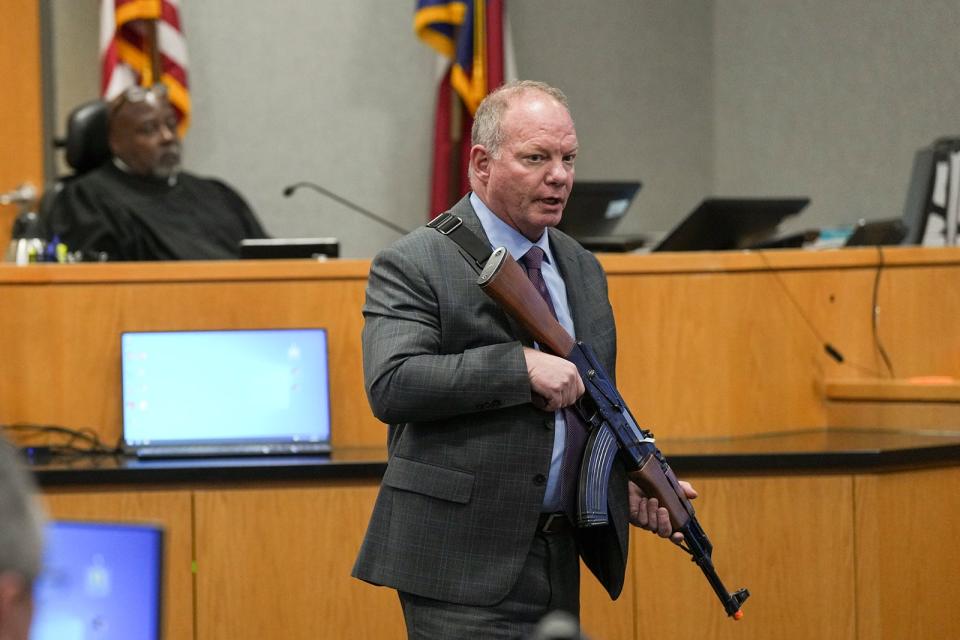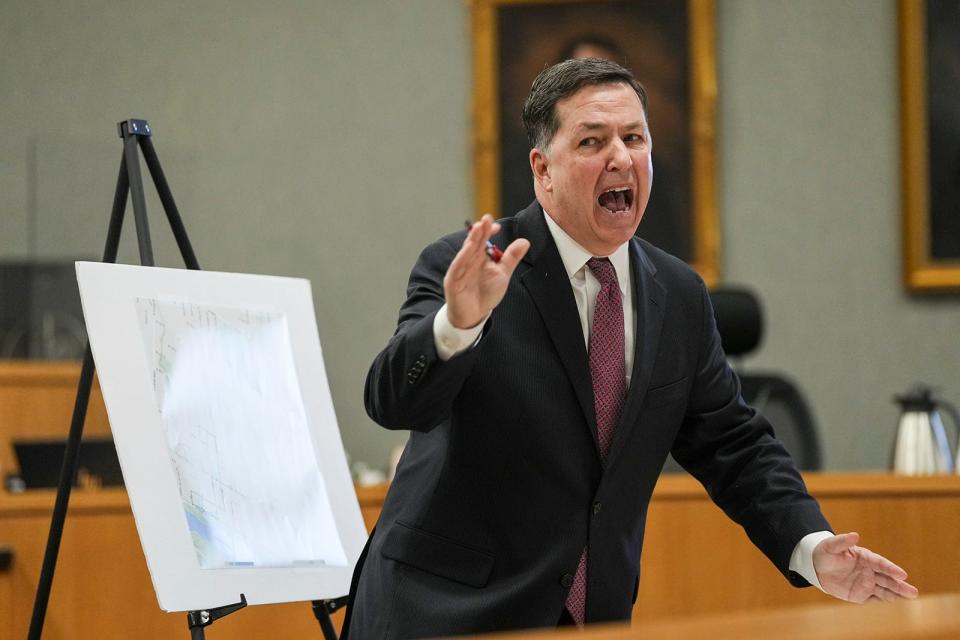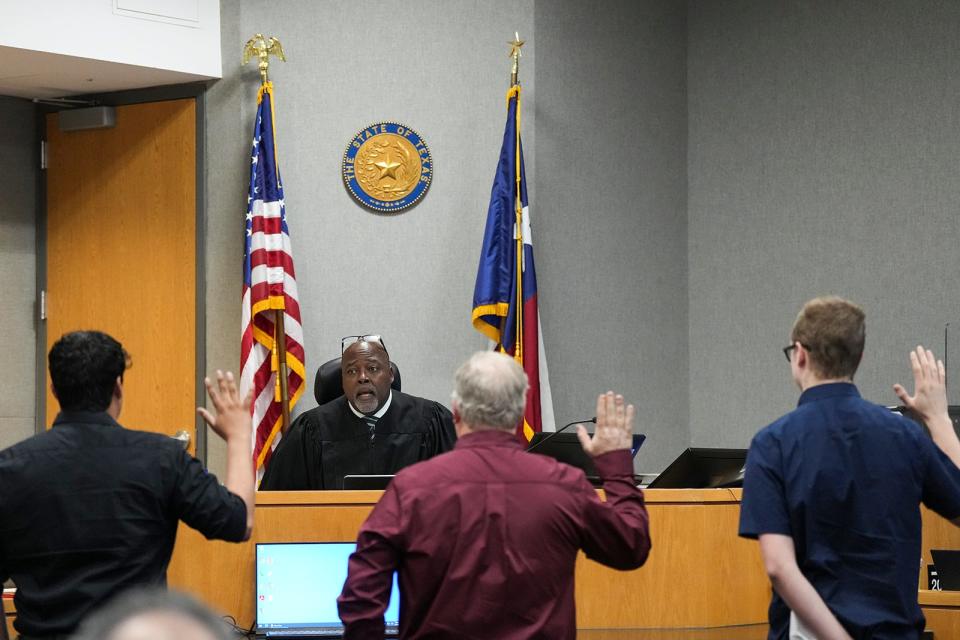Lawyers have differing views on what really happened when Austin protester Garrett Foster was killed
What really happened the night that Daniel Perry fatally shot Austin protester Garrett Foster?
Lawyers had differing versions of events during opening statements at the trial of Perry, who is charged with murder in the shooting death of 28-year-old Foster. Perry, 38, faces up to life in prison if convicted.
Prosecutor Guillermo Gonzalez said Perry, an Army sergeant who was working that night as an Uber driver, intentionally drove into a crowd of protesters on Congress Avenue at Fourth Street on July 25, 2020.
Gonzalez said that after Perry stopped his car, Foster was carrying an AK-47 and approached Perry's window to speak to him and that Perry shot him five times. Foster had his rifle on safety, Gonzalez said, did not have a bullet chambered and had the weapon lowered.
Trial in death of Austin protester Garrett Foster begins. Was it self-defense or murder?

Defense lawyer Clint Broden said Perry, distracted by a text message from a woman he wanted to spend time with, accidentally drove into the crowd when he turned onto Congress Avenue. A protester jumped in front of the car, forcing Perry to stop, Broden said.
Foster motioned for Perry to roll down his window and then shouted, "Get out of your car," Broden yelled to the jurors in the courtroom. Foster also lifted his AK-47 toward Perry, said Broden.
"Daniel Perry had two-tenths of second to figure out whether he was going to live or die," the defense attorney said.
Gonzalez said it was not true that Perry was distracted by a text from a woman. Perry had given a ride to a woman that night and they had agreed to spend time together, Gonzalez said. Perry decided against it after the woman sent him a text saying he would have to pay $200 to meet with her. Evidence will show, Gonzalez said, that Perry sent his last text message to the woman two minutes before he turned into the crowd of protesters who were part of a Black Lives Matter march.
Before the shooting, Perry had an online conversation with a friend about an incident in Seattle where someone intentionally drove into protesters and then shot one, Gonzalez said. "They discussed whether or not someone who instigated an incident should be able to say, 'I acted in self-defense,'" Gonzalez said.

More: Judge denies motion to drop case against driver who fatally shot Black Lives Matter protester
He said Perry also told police three different versions about what happened. He first told police he stopped at a red light at Fourth Street and Congress and turned right, said Gonzalez. The prosecutor said video evidence would show that wasn't true. The second time he told officers he was texting and driving when he ended up in the crowd, Gonzalez said.
The third time Perry talked to police, he said for the first time that the light was yellow at the Fourth and Congress intersection, that he rolled down his window because he thought Foster was a police officer and that he didn't remember what Foster said to him, Gonzalez said.
"Evidence will show that Perry instigated events that night and it was Perry who engaged in unlawful use of force by driving his car into the crowd," Gonzalez said.
More: Friction between Travis County district attorney, police emerges in Garrett Foster case

Defense attorney Broden said Perry was just trying to get to another area downtown where there was a surging demand for rides. "He had his tactical gear in his trunk because he didn't anticipate the protest," Broden said.
The crowd was threatening to Perry when he drove into it in his four-door Hyundai, said Broden.
"The protesters started converging on Perry's car, kicking, hitting the car, pounding on the car, screaming, yelling and cursing," he said. Foster was carrying 130 rounds of ammunition plus a metal baton and a knife when he approached Perry's car, Broden said.
When Foster raised his rifle, Perry had no choice but to shoot at him and could not aim at Foster's arms or legs because of fears that the bullets might go astray and hit others, Broden said. As Perry drove away, another protester shot and hit the back of Perry's car, the defense attorney said. Forty seconds after Perry left the scene, he called 911 to say he was forced to use his weapon because he was in fear of losing his life, Broden said.

More: Austin protest shooting victim remembered for devotion to fiancée, racial justice
Witness Gordon Lefferd, an amateur photographer, said he took about 1,500 pictures at the march, including many of Foster. A few of his pictures of Foster were shown at the trial, including ones with Foster carrying his rifle during the march with the barrel pointed down. One of his photos showed three or four protesters standing around Perry's car before the shooting, including Foster. Lefferd did not capture the shooting in his photos.
Witness Travis Bonnet, an Uber driver, said he saw Perry accelerating on Fourth Street before Perry made a turn into the protesters. "It was kind of a shock to see him do that unprovoked," Bonnet said he told police. Bonnet said he later saw protesters swarming Perry's car like "ants on candy."
Foster was an Air Force veteran who was the full-time caretaker of his fiancée, Whitney Mitchell. She had all four of her limbs amputated after she developed a medical condition due to sepsis. Mitchell was at the march when Foster was killed, but it wasn't clear how close she was to him when he was shot.
The trial will resume Wednesday and is expected to last about two weeks.
This article originally appeared on Austin American-Statesman: Jurors hear differing versions of how Austin protester was killed

